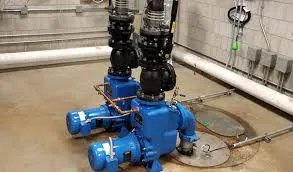Lao
- Afrikaans
- Albanian
- Amharic
- Arabic
- Armenian
- Azerbaijani
- Basque
- Belarusian
- Bengali
- Bosnian
- Bulgarian
- Catalan
- Cebuano
- Corsican
- Croatian
- Czech
- Danish
- Dutch
- English
- Esperanto
- Estonian
- Finnish
- French
- Frisian
- Galician
- Georgian
- German
- Greek
- Gujarati
- Haitian Creole
- hausa
- hawaiian
- Hebrew
- Hindi
- Miao
- Hungarian
- Icelandic
- igbo
- Indonesian
- irish
- Italian
- Japanese
- Javanese
- Kannada
- kazakh
- Khmer
- Rwandese
- Korean
- Kurdish
- Kyrgyz
- Lao
- Latin
- Latvian
- Lithuanian
- Luxembourgish
- Macedonian
- Malgashi
- Malay
- Malayalam
- Maltese
- Maori
- Marathi
- Mongolian
- Myanmar
- Nepali
- Norwegian
- Norwegian
- Occitan
- Pashto
- Persian
- Polish
- Portuguese
- Punjabi
- Romanian
- Russian
- Samoan
- Scottish Gaelic
- Serbian
- Sesotho
- Shona
- Sindhi
- Sinhala
- Slovak
- Slovenian
- Somali
- Spanish
- Sundanese
- Swahili
- Swedish
- Tagalog
- Tajik
- Tamil
- Tatar
- Telugu
- Thai
- Turkish
- Turkmen
- Ukrainian
- Urdu
- Uighur
- Uzbek
- Vietnamese
- Welsh
- Bantu
- Yiddish
- Yoruba
- Zulu
Telephone: +86 13120555503
Email: frank@cypump.com
ພ.ຈ. . 07, 2024 19:09 Back to list
Understanding the Importance of Pump Maintenance in Septic System Care
Understanding Septic System Pumps Essential Components for Wastewater Management
Septic systems play a vital role in managing wastewater for homes that are not connected to municipal sewer systems. At the heart of these systems lies a critical component—the septic system pump. Understanding the importance of this device, how it functions, and why it needs regular maintenance is essential for any homeowner relying on a septic system.
What Is a Septic System Pump?
A septic system pump is designed to move wastewater from the septic tank to the drain field or leach field. Typically used in systems where the tank is located below the level of the drain field, the pump is usually submersible and works automatically, activated by a float switch that detects the water level in the tank. When the wastewater reaches a predetermined level, the float switch signals the pump to engage, pushing the effluent out to the soil absorption area.
Types of Septic Pumps
There are several types of septic system pumps, each serving different functions and applications
1. Effluent Pumps These are commonly used to transfer liquid wastewater away from the septic tank. They are designed to handle smaller solids than those found in the sewage in a traditional septic tank.
2. Sewage Pumps These pumps can move solids as large as 2 inches in diameter, making them suitable for applications where a larger volume of septic waste is present.
3. Grinder Pumps These pumps grind solids into a slurry before pumping. This makes them ideal for homes situated at lower elevations where the effluent must be pumped up to higher ground.
septic system pump

4. Aerobic Treatment Unit Pumps In aerobic septic systems, these pumps assist in the air flow necessary for aerobic bacteria to break down waste efficiently.
Importance of Regular Maintenance
Regular maintenance of the septic system pump is crucial for the longevity and efficiency of the system. Homeowners should check the pump periodically for any signs of wear and tear, such as strange noises or frequent cycling. This can indicate a malfunction that could lead to system failure if not addressed promptly.
Additionally, septic system pumps should be inspected by professionals at least every three to five years, depending on the system's design and usage. Regular pumping of the septic tank itself—typically every three to five years—also plays a critical role in keeping the system in good working order. Failing to maintain either the pump or the tank can lead to costly repairs down the line, including the potential need for a brand new septic system.
Signs Your Pump May Need Attention
Several warning signs can indicate that your septic system pump needs maintenance or replacement. Homeowners should be vigilant for
- Slow Drains If drains in your home are slow or backing up, it may indicate that the pump isn’t functioning properly. - Unpleasant Odors Foul odors around your septic area can signal a malfunctioning pump or issues with the tank. - Puddles or Wet Spots Unexplained wet areas in your yard can indicate that effluent is not being processed correctly. - High Electric Bills An increase in energy expenses might suggest that the pump is working overtime due to a blockage or malfunction.
Conclusion
Septic system pumps are crucial for effective wastewater management in homes not connected to public sewer systems. By understanding how these pumps work and their maintenance requirements, homeowners can ensure their septic systems operate smoothly. Regular inspections, prompt attention to any warning signs, and knowledgeable support from professionals can help maintain this essential component of wastewater management, ensuring a clean and functional home environment for years to come.
-
Heavy-Duty Mining Sludge Pumps - Wear-Resistant Slurry Handling
NewsAug.02,2025
-
Horizontal Split Case Pump with GPT-4 Turbo | High Efficiency
NewsAug.01,2025
-
ISG Series Pipeline Pump - Chi Yuan Pumps | High Efficiency, Durable Design
NewsAug.01,2025
-
Advanced Flue Gas Desulfurization Pump with GPT-4 Turbo | Durable & Efficient
NewsJul.31,2025
-
ISG Series Vertical Pipeline Pump - Chi Yuan Pumps | Advanced Hydraulic Design&Durable Construction
NewsJul.31,2025
-
ISG Series Vertical Pipeline Pump - Chi Yuan Pumps | Energy Efficient & Low Noise
NewsJul.31,2025










